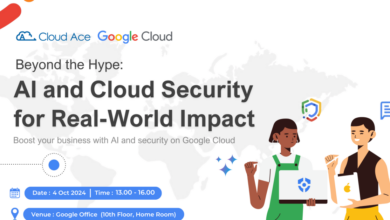
Europol Warns Against These Cyber Crimes
Europol warns against these cyber crimes, a growing threat impacting individuals and organizations globally. From sophisticated ransomware attacks crippling businesses to everyday phishing scams targeting personal data, the landscape of online threats is constantly evolving. This post delves into the specific cybercrimes Europol highlights, exploring the methods used, the vulnerabilities exploited, and the devastating consequences. We’ll also examine preventative measures and strategies for staying safe in the digital age.
Understanding the tactics employed by cybercriminals is crucial for effective protection. We’ll dissect various attack vectors, from exploiting software vulnerabilities to manipulating human psychology through social engineering. By understanding how these attacks work, we can better equip ourselves and our organizations to defend against them. This includes exploring practical steps like implementing strong password policies, utilizing multi-factor authentication, and staying up-to-date on software patches.
Europol’s Warning

Europol regularly issues warnings about prevalent cybercrimes, highlighting the evolving tactics used by criminals and the devastating impact on individuals and organizations. Understanding these threats is crucial for effective prevention and mitigation. This post will delve into the specific types of cybercrime Europol highlights, examining their methods and providing real-world examples.
Types of Cybercrime Highlighted by Europol
The following table categorizes cybercrimes frequently warned against by Europol, detailing their methods and impact. It’s important to remember that these categories often overlap, and criminals frequently employ a combination of techniques.
| Crime Type | Description | Target | Impact |
|---|---|---|---|
| Ransomware | Malware that encrypts a victim’s data, demanding a ransom for its release. | Individuals, businesses, and organizations. | Data loss, financial losses, operational disruption, reputational damage. |
| Phishing | Deceptive attempts to acquire sensitive information such as usernames, passwords, and credit card details by masquerading as a trustworthy entity in electronic communication. | Individuals and organizations. | Identity theft, financial losses, data breaches. |
| Business Email Compromise (BEC) | Cybercriminals impersonate executives or trusted business partners via email to trick employees into transferring money or revealing sensitive information. | Businesses and organizations. | Significant financial losses, reputational damage. |
| Malware | Malicious software designed to damage, disrupt, or gain unauthorized access to computer systems. This includes viruses, worms, Trojans, and spyware. | Individuals, businesses, and organizations. | Data loss, system damage, financial losses, identity theft. |
| Denial-of-Service (DoS) Attacks | Attempts to make a machine or network resource unavailable to its intended users. | Websites, online services, and networks. | Service disruption, financial losses, reputational damage. |
Methods Employed in Cybercrimes
Understanding the methods used is key to effective defense. Criminals employ a variety of sophisticated techniques.
Many cybercrimes rely on a combination of technical exploits and social engineering. For instance:
- Technical Exploits: This involves leveraging vulnerabilities in software or systems to gain unauthorized access. This might involve exploiting known security flaws, using zero-day exploits (newly discovered vulnerabilities), or employing brute-force attacks to guess passwords.
- Social Engineering: This manipulates individuals into divulging confidential information or performing actions that compromise security. Phishing emails, pretexting (creating a false scenario to gain trust), and baiting (offering something enticing to trick the victim) are common social engineering tactics.
- Malware Delivery: Malware is often delivered through malicious attachments in emails, compromised websites, or drive-by downloads (unintentional downloads while browsing the internet).
Examples of High-Profile Cybercrime Incidents
Several high-profile incidents illustrate the devastating impact of these crimes.
One example is the 2020 Colonial Pipeline ransomware attack. The attackers used a sophisticated ransomware variant to encrypt the company’s systems, disrupting fuel delivery across the eastern United States. The pipeline company paid a substantial ransom to regain access to its systems, highlighting the significant financial and operational impact of such attacks.
Another notable example is the 2017 NotPetya ransomware outbreak, which affected numerous organizations globally. This attack leveraged a vulnerability in Ukrainian accounting software to spread rapidly, causing billions of dollars in damage. The widespread impact demonstrated the potential for ransomware to cripple critical infrastructure and businesses.
The SolarWinds supply chain attack in 2020 involved the compromise of SolarWinds’ Orion software, which was then distributed to thousands of its customers. This attack allowed attackers to gain access to sensitive data from numerous organizations, including government agencies and private companies. The attackers used a combination of sophisticated techniques, including malware injection and social engineering, to carry out this large-scale attack.
The impact was far-reaching, compromising sensitive data and potentially impacting national security.
Vulnerabilities Exploited in Cybercrime
Europol’s recent warnings highlight a disturbing trend: cybercriminals are increasingly exploiting known software vulnerabilities and human weaknesses to gain access to sensitive data and systems. Understanding these vulnerabilities and the tactics employed is crucial for individuals and organizations to bolster their defenses. This section will delve into the common methods used, focusing on both technical and social engineering approaches.
Software Vulnerabilities and System Weaknesses
Criminals leverage a range of software vulnerabilities and system weaknesses to infiltrate networks and steal data. These vulnerabilities often stem from outdated software, poorly configured systems, and insufficient security patching. The following table Artikels some common examples:
| Vulnerability Type | Description | Affected Systems | Mitigation Strategies |
|---|---|---|---|
| SQL Injection | Malicious SQL code is injected into an application’s input fields to manipulate database queries, potentially granting unauthorized access to data. | Web applications, databases | Input validation, parameterized queries, least privilege access |
| Cross-Site Scripting (XSS) | Malicious scripts are injected into websites, allowing attackers to steal cookies, session IDs, and other sensitive information from users. | Web applications, web browsers | Output encoding, input validation, Content Security Policy (CSP) |
| Remote Code Execution (RCE) | Attackers gain the ability to execute arbitrary code on a vulnerable system, often through exploits targeting unpatched software. | Servers, applications, operating systems | Regular software updates, secure coding practices, intrusion detection systems |
| Phishing | Although not strictly a software vulnerability, phishing attacks exploit human trust to gain access to credentials or sensitive information. | All systems accessed through compromised credentials | Security awareness training, multi-factor authentication, email filtering |
Social Engineering Exploits
Criminals often exploit human psychology through social engineering techniques to bypass technical security measures. These tactics rely on manipulating individuals into divulging sensitive information or performing actions that compromise security. Examples include phishing emails that mimic legitimate organizations, pretexting (creating a false scenario to gain trust), and baiting (offering something enticing to trick users). For instance, an attacker might send an email claiming to be from a bank, requesting login credentials to “verify” an account.
Hypothetical Scenario: Exploiting a SQL Injection Vulnerability
Imagine a small online store using a vulnerable e-commerce platform. An attacker discovers that the website’s search function is susceptible to SQL injection. They craft a malicious search query, like “product name’ OR ‘1’=’1”, which bypasses authentication checks. This query returns all products from the database, revealing sensitive information like customer details and pricing strategies. The attacker can then use this data for identity theft, fraud, or competitive intelligence.
The vulnerability could have been mitigated by implementing parameterized queries or proper input validation, preventing the malicious SQL code from being executed.
Impact and Consequences of Targeted Cybercrimes
The rise of sophisticated cyberattacks has brought with it a devastating array of consequences, impacting not only businesses and governments but also individuals and entire communities. Understanding the far-reaching effects of these crimes is crucial for developing effective prevention and mitigation strategies. The economic and social ramifications are intertwined, creating a complex web of damage that requires a multi-faceted approach to address.
Economic Consequences of Cybercrime
The economic impact of targeted cybercrimes is substantial and multifaceted. These crimes inflict significant financial losses, disrupt operations, and severely damage reputations, often leading to long-term financial instability.
- Financial Losses: Direct financial losses include the cost of stolen funds, ransomware payments, data recovery, and system repairs. The NotPetya ransomware attack in 2017, for example, caused billions of dollars in damage globally, affecting companies like Maersk and Merck.
- Business Disruption: Cyberattacks can cripple business operations, leading to lost productivity, delays in projects, and the inability to fulfill contracts. This disruption can result in lost revenue, decreased market share, and potential bankruptcy.
- Reputational Damage: Data breaches and cyberattacks can severely damage a company’s reputation, leading to loss of customer trust, decreased investor confidence, and difficulties attracting and retaining talent. The Equifax data breach in 2017, which exposed the personal information of millions of people, resulted in significant reputational damage and legal repercussions.
Social Impact of Cybercrime
Beyond the economic toll, targeted cybercrimes have profound social consequences that affect individuals, communities, and national security. The psychological distress experienced by victims, coupled with the potential for widespread societal disruption, underscores the urgent need for robust cybersecurity measures.
The most significant social consequences of cybercrime include the erosion of public trust in institutions, the spread of misinformation and propaganda, and the increased vulnerability of critical infrastructure to attack. The potential for widespread societal disruption and the psychological harm inflicted on victims cannot be overstated.
Impact of Cybercrime Across Sectors, Europol warns against these cyber crimes
Different types of cybercrime disproportionately affect various sectors. The healthcare sector, for example, is particularly vulnerable to ransomware attacks, which can disrupt critical medical services and compromise patient data. Financial institutions face significant risks from fraud, phishing scams, and data breaches, while government agencies are targeted by sophisticated state-sponsored attacks aimed at stealing sensitive information or disrupting critical services.
Europol’s latest warnings about escalating cybercrime highlight the urgent need for robust security measures. Understanding how to effectively manage cloud security is key, and that’s where learning about solutions like bitglass and the rise of cloud security posture management becomes crucial. Ultimately, proactive cloud security is our best defense against the threats Europol is highlighting.
Each sector requires tailored cybersecurity strategies to address its unique vulnerabilities.
Europol’s Recommendations for Prevention and Mitigation

Europol’s warnings about escalating cybercrime highlight the urgent need for proactive measures. Individuals and organizations alike must adopt a multi-layered approach to security, combining technical solutions with robust security awareness training. Ignoring these recommendations leaves you vulnerable to significant financial losses, reputational damage, and even legal repercussions. This section Artikels practical steps you can take to significantly reduce your risk.
Preventive Measures for Individuals and Organizations
Taking proactive steps to protect yourself from cybercrime is crucial. These measures range from simple practices to more involved security protocols, but all contribute to a stronger defense against threats. A layered approach is key; a single weak point can compromise the entire system.
- Strong Passwords and Multi-Factor Authentication (MFA): Use strong, unique passwords for every online account and enable MFA whenever possible. This adds an extra layer of security, making it significantly harder for attackers to access your accounts even if they obtain your password.
- Regular Software Updates: Keep your operating systems, applications, and antivirus software updated. These updates often include critical security patches that address known vulnerabilities.
- Beware of Phishing and Social Engineering: Be cautious of suspicious emails, messages, and websites. Never click on links or open attachments from unknown senders. Verify the authenticity of any communication before taking action.
- Secure Wi-Fi Networks: Avoid using public Wi-Fi for sensitive transactions. If you must use public Wi-Fi, use a VPN to encrypt your connection.
- Data Backups: Regularly back up your important data to an external hard drive or cloud storage service. This protects you from data loss in case of a ransomware attack or other data breaches.
- Regular Security Audits: Organizations should conduct regular security audits to identify and address vulnerabilities in their systems and processes.
- Employee Training: Organizations must invest in comprehensive cybersecurity awareness training for all employees. This training should cover topics such as phishing, social engineering, and safe password practices.
- Incident Response Plan: Organizations should develop and regularly test an incident response plan to handle cyberattacks effectively. This plan should Artikel steps to contain the attack, recover from the incident, and mitigate future risks.
Technological Solutions for Cybercrime Mitigation
Technological solutions provide a critical layer of defense against cyberattacks. However, it’s important to understand both their benefits and limitations. A balanced approach that combines technology with strong security practices is most effective.
| Solution Type | Description | Benefits | Limitations |
|---|---|---|---|
| Firewall | A network security system that monitors and controls incoming and outgoing network traffic based on predetermined security rules. | Prevents unauthorized access to networks and systems; blocks malicious traffic. | Can be bypassed by sophisticated attacks; requires ongoing maintenance and updates. |
| Intrusion Detection System (IDS) | A system that monitors network traffic for malicious activity and alerts administrators to potential threats. | Detects suspicious activity; provides early warning of attacks. | Can generate false positives; requires skilled personnel to interpret alerts and respond effectively. |
| Antivirus Software | Software that detects and removes malware from computers and networks. | Protects against viruses, worms, and other malware; prevents infection and data loss. | Requires regular updates; may not detect all new threats; can slow down system performance. |
| Virtual Private Network (VPN) | Creates a secure, encrypted connection over a public network, protecting data from eavesdropping. | Encrypts internet traffic; masks IP address; protects data privacy on public Wi-Fi. | Can slow down internet speed; requires a VPN subscription; may not protect against all threats. |
Cybersecurity Awareness Training: A Crucial Defense
Effective cybersecurity awareness training is paramount in reducing the likelihood of successful attacks. Human error remains a significant factor in many cyber breaches. Educating users about best practices significantly strengthens an organization’s overall security posture. Training should cover topics like identifying phishing attempts, creating strong passwords, recognizing social engineering tactics, and understanding the importance of reporting suspicious activity.
Regular refresher courses and simulated phishing exercises can reinforce learning and maintain vigilance. By empowering users with knowledge and awareness, organizations significantly reduce their vulnerability to human-driven attacks. A well-trained workforce is the first line of defense against many cyber threats.
Illustrative Examples of Cybercrime Prevention: Europol Warns Against These Cyber Crimes
Cybercrime is a growing threat, impacting individuals and organizations alike. Effective prevention strategies are crucial for mitigating risks and protecting valuable data. This section explores practical examples of robust security measures that can significantly reduce your vulnerability to cyberattacks. These are not exhaustive, but represent essential building blocks of a strong cybersecurity posture.
Europol’s warnings about rising cybercrime are a serious concern, especially with the increasing reliance on digital systems. Building robust and secure applications is crucial, and that’s where understanding the potential of domino app dev, the low-code and pro-code future , comes in. Learning to develop secure apps is key to mitigating the threats highlighted by Europol’s recent alerts.
We need to be proactive in building a safer digital world.
Strong Password Policy
A strong password policy is the cornerstone of account security. Weak passwords are easily guessed or cracked, leaving your accounts vulnerable. A robust policy should mandate passwords that meet specific criteria. These criteria should include a minimum length (at least 12 characters is recommended), a mix of uppercase and lowercase letters, numbers, and symbols. Furthermore, passwords should not be reused across different accounts.
Regular password changes, though sometimes inconvenient, are also a best practice, especially for highly sensitive accounts. Consider using a password manager to generate and securely store complex, unique passwords for each of your online accounts. This tool can significantly simplify password management while enhancing overall security.
Multi-Factor Authentication (MFA)
Multi-factor authentication (MFA) adds an extra layer of security beyond just a password. It requires users to verify their identity using two or more factors, making it exponentially more difficult for unauthorized individuals to access accounts, even if they possess a stolen password. Different MFA methods exist, each relying on a distinct factor. These factors typically fall under three categories: something you know (password), something you have (phone, security key), and something you are (biometrics, like fingerprint or facial recognition).
MFA Illustration
Imagine a diagram showing a user attempting to log into an online banking account. The first step is entering their username and password (something they know). This is represented by a box labeled “Username/Password”. After entering these credentials, the system then sends a one-time code (OTP) via SMS to the user’s registered mobile phone (something they have). This is illustrated by an arrow pointing from the system to a mobile phone icon labeled “One-Time Code (SMS)”.
The user then enters this code into the system. Finally, a green checkmark indicates successful login, representing the successful verification of the user’s identity through two factors. The diagram visually represents the flow of authentication, emphasizing the added security provided by the second factor.
Secure Coding Practices and Software Updates
Secure coding practices are paramount in preventing vulnerabilities in software applications. Developers should follow coding guidelines that minimize risks like SQL injection, cross-site scripting (XSS), and buffer overflows. Regular security audits and penetration testing are crucial to identify and address potential weaknesses before they can be exploited by malicious actors. Equally important is the prompt installation of software updates.
These updates often include security patches that address known vulnerabilities. Failing to update software leaves systems exposed to known exploits, making them easy targets for cybercriminals. Regular updates should be considered a non-negotiable aspect of maintaining a secure digital environment.
Final Wrap-Up

In conclusion, Europol’s warnings serve as a stark reminder of the ever-present danger of cybercrime. The diverse range of attacks, from ransomware to phishing, necessitates a multi-faceted approach to prevention and mitigation. By understanding the vulnerabilities exploited, implementing robust security measures, and fostering a culture of cybersecurity awareness, we can significantly reduce our risk and protect ourselves from the devastating consequences of these crimes.
Staying informed and proactive is key to navigating the digital world safely.
Answers to Common Questions
What is social engineering in the context of cybercrime?
Social engineering is the manipulation of individuals into divulging confidential information or performing actions that compromise security. This often involves building trust through deceptive tactics.
How often should I update my software?
Software updates should be installed as soon as they are released. These updates often contain crucial security patches that protect against known vulnerabilities.
What is multi-factor authentication (MFA), and why is it important?
MFA adds an extra layer of security by requiring multiple forms of verification to access an account, making it significantly harder for unauthorized individuals to gain access even if they have a password.
What are some examples of strong passwords?
Strong passwords are long (at least 12 characters), include a mix of uppercase and lowercase letters, numbers, and symbols, and are unique to each account. Avoid using easily guessable information like birthdays or pet names.





